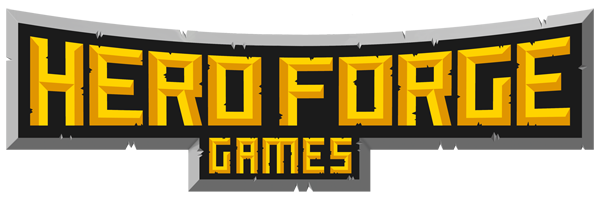20 Questions about my Heroes Against Darkness campaign from Brandon at Untimately:
1. Ability scores generation method?
The system supports 3d6, 4d6 drop lowest, point array and point buy:
Method 1: Normal Player Characters
Roll 3d6 six times, then choose which ability to assign each score.
This method gives an unadjusted cumulative total of 64.
Method 2: Epic Player Characters
Roll 4d6 (drop the lowest dice) six times, and then choose which ability to assign each score.
This method gives an unadjusted cumulative total of 73.
Method 3: Point Array
Assign the following scores to one each of the Ability Scores: 16, 14, 13, 12, 11, 10.
This method gives an unadjusted cumulative total of 76.
Method 4: Point Spread
Spread a total of 75 points (or another agreed amount) amongst the six abilities.
No ability score can be less than 8 and no score can be more than twice as high as the lowest.
In our current campaign, the players used the 4d6 method. This led to some disparity, with both of the Warlocks having cumulative ability score totals of over 80 points.
2. How are death and dying handled?
Heroes Against Darkness has these pretty straightforward death and dying rules:
• Unconscious at 0 HP
• Dying from -1 HP
• No single attack can take a character to less than -5 HP
• Dying character loses 1 HP/round
• Stabilize a dying character with an ability test
• Death occurs immediately at -10 HP
The -5 HP clamp for a single attack is because character and enemy damage in Heroes Against Darkness scales at higher levels, so characters can end up taking enough damage to take them from quite alive to dead-dead without this rule.
3. What about raising the dead?
All of the magi classes have a spell variant that allows them to raise the dead:
• Warlock: L10 Reincarnate (Transfers character’s soul into new body)
• Healer/Hospiter: L8 Restore Life (Returns dead character to 1 HP)
• Canonate: L9 Resurrect (Returns dead character to 1 HP, but with Ability Scores temporarily lowered)
• Necromancer: L10 Reanimate (Returns dead character to 1 HP, but with Ability Scores permanently reduced by 1)
• Mystic: L10 Recall Soul (Returns dead character to 1 HP, Wisdom permanently reduced by 2)
These powerful spell powers also temporarily reduce the caster’s Wisdom score by the level of the spells target. The caster’s wisdom score then improves by 1 for each full rest.
In my campaign, characters who have died have been dead-dead. The other characters haven’t had access to the resurrection spells, so we’ve used character deaths (which occured in an almost TPK) to introduce new characters.
4. How are replacement PCs handled?
The recent character deaths wiped out most of the party, so we used that opportunity to introduce a whole new adventuring party that picked up close to where the old characters died and then went on to rescue the only survivor of the previous party from a band of orc raiders that he’d been sold to.
5. Initiative: individual, group, or something else?
Individual initiative for all characters and for groups of monsters.
6. Are there critical hits and fumbles? How do they work?
Critical hits are worth maximum damage, critical fumbles aren’t in the game system (but the GM is always welcome to house-rule it).
7. Do I get any benefits for wearing a helmet?
Nope, helmets are an integral part of any set of armor. If you’re specifically not wearing a helmet I imagine your armor defense would be lower.
This is slightly reminiscent of ‘called shots’, where characters gain bonuses from trying to hit specific locations on an enemy’s body. I like to think that the character is always trying to damage the enemy as much as possible, so there’s no point to introducing specific ‘called shot’ mechanic (unless they’re trying to achieve something specific, like disrupting a bowman’s shot or something).
Having said that, Heroes Against Darkness has a few melee powers that replicate some of the mechanical effects of called shot. These powers are Careful Strike and Powerful Blow:
Careful Strike (Level 1)
| Condition | Target in melee range |
|---|---|
| Attack | d20 + Melee Bonus +2 |
| Against | Armor Defense |
| Damage
Level 4: Level 8: Level 12: |
Weapon Damage + Melee Bonus – 2 2d Weapon Damage + Melee Bonus – 4 3d Weapon Damage + Melee Bonus – 6 4d Weapon Damage + Melee Bonus – 8 |
Powerful Strike (Level 2)
| Condition | Target in melee range |
|---|---|
| Attack | d20 + Melee Bonus -2 |
| Against | Armor Defense |
| Damage
Level 5: Level 9: Level 13: |
Weapon Damage + Melee Bonus + 2 2d Weapon Damage + Melee Bonus + 4 3d Weapon Damage + Melee Bonus + 6 4d Weapon Damage + Melee Bonus + 8 |
Mechanically, these offer the sort of trade-offs of a called shot (extra damage for reduced hit chance or less damage for increased hit chance), but without the rigmarole of hitting a particular part of an opponent.
8. Can I hurt my friends if I fire into melee or do something similarly silly?
Nope, not in the rules. But as ever, GM discretion applies.
9. Will we need to run from some encounters, or will we be able to kill everything?
Depends on the encounter and the state of the player’s characters. Last night they ran away from a couple of spear-fang spiders when they were exploring an ancient beacon tower, having just survived a large fight with the spider queen and her minions.
10. Level-draining monsters: yes or no?
Nope, but temporary ability draining could be interesting.
11. Are there going to be cases where a failed save results in PC death?
Nope, there’s no Save-Or-Die. Death is only through loss of HP, not through absolute binary spell powers.
12. How strictly are encumbrance & resources tracked?
Barely.
13. What’s required when my PC gains a level? Training? Do I get new spells automatically? Can it happen in the middle of an adventure, or do I have to wait for down time?
Well, the system offers the GM the discretion to require training or any other requirement before the characters gain levels. New spells and martial powers are automatically gained.
I personally allow the characters to gain levels at a short rest.
14. What do I get experience for?
Experience is gained for overcoming challenges, which might include:
• Beating or otherwise overcoming monsters
• Solving puzzles
• Disarming or avoiding traps
• Overcoming adversarial NPCs
• Completing quests
15. How are traps located? Description, dice rolling, or some combination?
This is up to the GM. Ability tests for the character’s perception are the usual way that I run these, which involves a d20 dice roll plus their intelligence bonus (intelligence modifier + ½ level bonus).
16. Are retainers encouraged and how does morale work?
Not encouraged or discouraged, daily costs are listed for various hire rates. Morale is at the GM’s discretion.
17. How do I identify magic items?
Using the Identify Magic spell:
Identify Magic (2 Anima) (Level 2)
| Spell Effect | Discern magical enchantments of an object or area. 1 enchantment per caster level (lowest level enchantment first). |
|---|---|
| Casting Time | 10 minutes |
| Range | 1 object or area |
18. Can I buy magic items? Oh, come on: how about just potions?
Yes, but in my campaign they’re rare. Potions can be bought, if you can find someone to sell them to you.
19. Can I create magic items? When and how?
Scrolls, Potions, and Wands can be created from spells. The spell powers for creating these are introduced at levels 3, 7, and 7, respectively. As with the resurrection spells, creating these sorts of magic items actually temporarily reduce the caster’s wisdom score.
20. What about splitting the party?
Up to the players. They’ve done a little bit when some players have been missing for a week, but generally they’re well-drilled to keep the party together.
Check out the full rules for Heroes Against Darkness over at the downloads page: Heroes Against Darkness – Game Rules.

